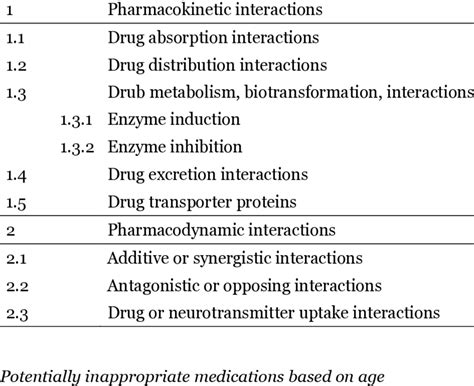Intro
Discover Atorvastatin Calcium uses, a statin medication, to lower cholesterol, prevent heart disease, and reduce stroke risk, managing hyperlipidemia and cardiovascular health.
Atorvastatin calcium, commonly known by its brand name Lipitor, is a medication that has been widely used for several decades to manage and treat various cardiovascular conditions. It belongs to a class of drugs known as statins, which are HMG-CoA reductase inhibitors. The primary function of atorvastatin calcium is to lower cholesterol levels in the blood, thereby reducing the risk of heart disease. This medication works by inhibiting the enzyme HMG-CoA reductase, which plays a crucial role in the production of cholesterol in the liver.
The importance of managing cholesterol levels cannot be overstated. High levels of low-density lipoprotein (LDL) cholesterol, often referred to as "bad" cholesterol, can lead to the accumulation of plaques in the arteries, a condition known as atherosclerosis. Over time, this can result in the narrowing or blockage of arteries, increasing the risk of heart attacks, strokes, and other cardiovascular events. Atorvastatin calcium, by reducing LDL cholesterol levels, helps to mitigate this risk, making it a critical component of cardiovascular disease prevention and management strategies.
The use of atorvastatin calcium extends beyond just the reduction of LDL cholesterol. It also has effects on other lipid parameters, such as increasing high-density lipoprotein (HDL) cholesterol, known as "good" cholesterol, and lowering triglycerides. These effects contribute to a more favorable lipid profile, further reducing the risk of cardiovascular events. Moreover, atorvastatin calcium has been shown to have anti-inflammatory properties and may help stabilize plaques in the arteries, making them less likely to rupture and cause a heart attack or stroke.
Pharmacological Mechanism

Atorvastatin calcium works by competitively inhibiting the enzyme HMG-CoA reductase. This enzyme is key in the biosynthesis of cholesterol, catalyzing the conversion of HMG-CoA to mevalonate, an early and rate-limiting step in the hepatic production of cholesterol. By inhibiting this enzyme, atorvastatin calcium reduces the liver's ability to produce cholesterol, leading to a decrease in the amount of cholesterol released into the bloodstream. Additionally, the reduced intrahepatic cholesterol concentration triggers an increase in the synthesis of LDL receptors on the surface of hepatocytes, which in turn increases the clearance of LDL cholesterol from the blood, further contributing to the lowering of circulating LDL levels.
Effects on Lipid Profiles
The impact of atorvastatin calcium on lipid profiles is multifaceted: - **LDL Cholesterol Reduction:** Atorvastatin calcium is highly effective in reducing levels of LDL cholesterol, with studies demonstrating significant reductions in LDL levels across a wide range of doses. - **HDL Cholesterol Increase:** There is evidence to suggest that atorvastatin calcium can also increase levels of HDL cholesterol, although the magnitude of this effect can vary. - **Triglyceride Lowering:** Atorvastatin calcium has been shown to lower triglyceride levels, which is beneficial for reducing the risk of cardiovascular disease.Clinical Uses

Atorvastatin calcium is indicated for the treatment of several conditions, including:
- Primary Hypercholesterolemia: This includes patients with elevated levels of LDL cholesterol.
- Combined Hyperlipidemia: For patients with elevated levels of LDL cholesterol and triglycerides, and low levels of HDL cholesterol.
- Familial Hypercholesterolemia: A genetic disorder characterized by very high levels of LDL cholesterol.
- Prevention of Cardiovascular Disease: Atorvastatin calcium is used to reduce the risk of myocardial infarction, stroke, and revascularization procedures in patients with or at high risk of cardiovascular disease.
Dosing and Administration
The dosing of atorvastatin calcium can vary depending on the patient's condition, response to therapy, and other factors. Typical starting doses range from 10 to 20 mg once daily, with a maximum dose of 80 mg daily. It is essential to monitor lipid levels and adjust the dose accordingly to achieve the desired therapeutic effect while minimizing potential side effects.Side Effects and Safety

While atorvastatin calcium is generally well-tolerated, it can cause side effects in some patients. Common side effects include:
- Muscle Pain: Myalgia is a common side effect, although more severe forms of muscle damage, such as myopathy and rhabdomyolysis, are rare.
- Liver Enzyme Elevation: Increases in liver enzymes have been reported, necessitating periodic monitoring of liver function tests.
- Gastrointestinal Symptoms: Nausea, constipation, and diarrhea can occur.
Interactions and Contraindications
Atorvastatin calcium can interact with other medications, including: - **CYP3A4 Inhibitors:** Drugs that inhibit the CYP3A4 enzyme can increase atorvastatin calcium levels, potentially increasing the risk of side effects. - **Gemfibrozil and Other Fibrates:** Concurrent use can increase the risk of myopathy.It is contraindicated in patients with active liver disease, significant elevations in liver enzymes, and in pregnant or breastfeeding women, due to the potential for fetal harm and the excretion of the drug into breast milk.
Future Perspectives

As research continues to evolve, the role of atorvastatin calcium in the management of cardiovascular disease is likely to expand. Ongoing studies are exploring its potential benefits in new areas, such as the prevention of chronic kidney disease progression and the reduction of inflammation in conditions beyond cardiovascular disease.
Emerging Trends in Statin Therapy
Emerging trends include the development of more potent statins, the use of statins in combination with other lipid-lowering therapies, and a greater emphasis on personalized medicine approaches to tailor statin therapy to the individual patient's risk factors and genetic profile.Conclusion and Recommendations

In conclusion, atorvastatin calcium is a highly effective medication for the management of hypercholesterolemia and the prevention of cardiovascular disease. Its ability to significantly lower LDL cholesterol levels, increase HDL cholesterol, and reduce triglycerides makes it a valuable tool in the fight against cardiovascular disease. As with any medication, it is crucial to weigh the benefits against the potential risks and to monitor patients closely for side effects.
For individuals considering atorvastatin calcium, it is essential to discuss the potential benefits and risks with a healthcare provider. This includes understanding the importance of lifestyle modifications, such as diet and exercise, in conjunction with medication therapy for optimal cardiovascular health.
We invite readers to share their experiences or ask questions about atorvastatin calcium in the comments section below. Sharing this article with others who may benefit from this information is also appreciated.
What is atorvastatin calcium used for?
+Atorvastatin calcium is used to lower cholesterol levels and prevent cardiovascular disease.
How does atorvastatin calcium work?
+It works by inhibiting the enzyme HMG-CoA reductase, which is involved in the production of cholesterol in the liver.
What are the common side effects of atorvastatin calcium?
+Common side effects include muscle pain, liver enzyme elevation, and gastrointestinal symptoms.
